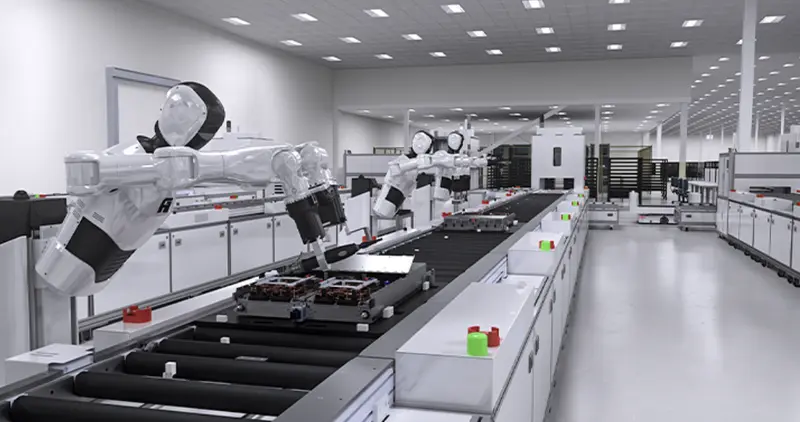- Published on
Foxconn to Deploy NVIDIA-Powered Humanoid Robots in Houston AI Server Plant

Foxconn, the world's largest electronics manufacturer and a key partner in producing NVIDIA's AI servers, has announced it will deploy humanoid robots on the production lines of its Houston, Texas, factory.
The announcement, made during NVIDIA's GTC conference in Washington, D.C., confirms that the robots will be "powered by the NVIDIA Isaac GR00T N model". This marks one of the first high-profile, real-world commitments to NVIDIA's ambitious robotics platform, moving its "Physical AI" initiative from the keynote stage to a live factory floor.
A "Benchmark AI Smart Factory"
The Houston plant, which produces AI servers for NVIDIA, is set to become a testbed for advanced automation. Foxconn stated the goal is to "build a world-leading benchmark AI smart factory" in partnership with NVIDIA.
This deployment is part of a broader strategy by Foxconn to scale up its AI server production in the United States, including facilities in Texas, Wisconsin, and California, to meet surging customer demand.
The Houston factory is already deeply integrated with NVIDIA's simulation tools. According to Foxconn, the project leverages NVIDIA Omniverse for factory planning and simulation, NVIDIA Isaac for path planning for autonomous mobile robots (AMRs), and NVIDIA Metropolis for operational monitoring and quality control.
The addition of humanoid robots represents the next phase of this collaboration. While the announcement did not specify a timeline, Reuters previously reported that the deployment was targeting the first quarter of 2026.
The Brains Behind the Bot: Project GR00T
This move provides a crucial use case for NVIDIA's Project GR00T (Generalist Robot 00 Technology), a foundational model for humanoid robots unveiled earlier this year.
NVIDIA's strategy is not to build the humanoid hardware itself, but to provide the open-source AI models, simulation tools, and computing platforms to "enable the ecosystem". Foxconn has previously been named as one of the partners adopting the NVIDIA Isaac platform.
The GR00T N1 model is designed to be a "generalist" AI, taking multimodal inputs like video and natural language to output robot actions. It employs a dual-system architecture inspired by human cognition: a "slow brain" (Vision Language Model) for high-level reasoning and a "fast brain" (diffusion transformer) for low-level, real-time control.
A "Simulation-First" Deployment
The deployment at Foxconn's plant appears to be the flagship case for NVIDIA's "simulation-first" development approach.
NVIDIA has heavily emphasized that training capable robots faces a significant "data bottleneck," as collecting real-world robot data is slow and expensive. The company's solution is to generate massive amounts of synthetic data using its simulation platforms, including Omniverse, Isaac Sim, and Cosmos.
The Houston factory, already a "digital twin" in Omniverse, is the logical place to test this theory. The robots will presumably be trained on millions of simulated tasks specific to the factory's layout and needs before ever being physically deployed.
Open Questions
While the announcement is a significant step, key details remain undisclosed, most notably which company's humanoid robot hardware Foxconn will be using. NVIDIA provides the "brain" (GR00T) and the "training ground" (Isaac Sim), but the physical "body" will come from one of the many hardware partners in its ecosystem.
The deployment will be a critical test for the entire robotics industry, particularly for the viability of the "sim-to-real" gap. The central challenge will be ensuring that the skills and behaviors learned in NVIDIA's digital simulations can transfer effectively and reliably to the complex, unpredictable environment of a real-world production line.
Share this article
Stay Ahead in Humanoid Robotics
Get the latest developments, breakthroughs, and insights in humanoid robotics — delivered straight to your inbox.